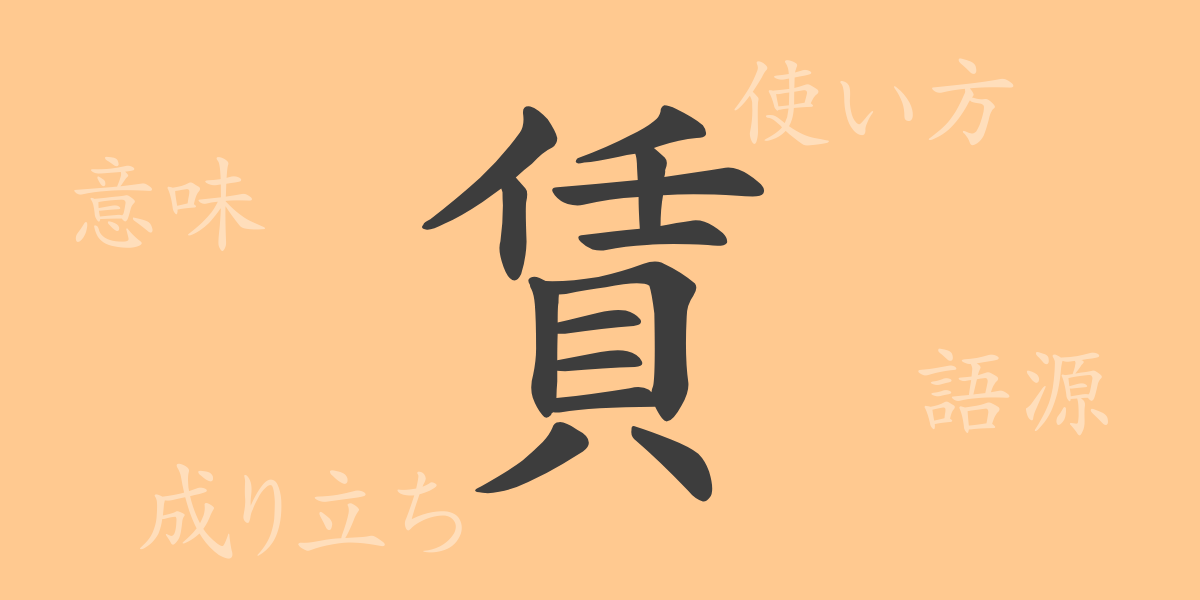In Japanese culture, kanji play roles beyond mere characters, each endowed with its own history, meaning, and beauty, unlocking deeper understanding of the language. This article shines a spotlight on the commonly used kanji ‘賃(チン)’, exploring its origins, meanings, usage, and even its presence in idioms and proverbs, unraveling the charm of ‘賃’.
Origins of ‘賃(チン)’
The kanji ‘賃’ originated in ancient China and initially depicted the concept of money, evolving from the character ‘貝’ which symbolizes currency. Over time, ‘賃’ came to represent transactions involving the lending and borrowing of money, reflecting its significance in monetary exchanges and, eventually, in concepts like wages and rent in various economic contexts.
Meaning and Usage of ‘賃(チン)’
‘賃’ primarily conveys meanings related to ‘rent’ or ‘wage’, and is commonly used in terms like ‘賃金(ちんぎん)’ (wages) and ‘賃貸(ちんたい)’ (rental). It plays a crucial role in economic activities, central to many business transactions.
Reading, Stroke Count, and Radical of ‘賃(チン)’
The kanji ‘賃’ reflects its complexity and significance through its structure:
- Reading: The on’yomi is ‘チン’; there is no commonly used kun’yomi.
- Stroke Count: ‘賃’ consists of 15 strokes.
- Radical: The radical is ‘貝’, related to money and value.
Idioms, Phrases, and Proverbs Using ‘賃(チン)’ and Their Meanings
There are numerous idioms and phrases involving ‘賃’, reflecting its importance in Japanese:
- 賃金(ちんぎん) – Wages paid as compensation for labor.
- 賃貸(ちんたい) – The act of renting or leasing a property in exchange for money.
- 家賃(やちん) – Rent paid monthly for residential properties.
- 賃上げ(ちんあげ) – An increase in wages.
- 賃下げ(ちんさげ) – A reduction in wages.
Conclusion on ‘賃(チン)’
The kanji ‘賃’ is integral to our daily economic interactions, symbolizing essential economic transactions in both personal and business contexts. Understanding the depth of its meanings enhances our grasp of Japanese, linking everyday use to broader economic processes. This exploration of ‘賃’ not only deepens our appreciation of its historical and practical significance but also enriches our understanding of Japanese linguistic depth.

























